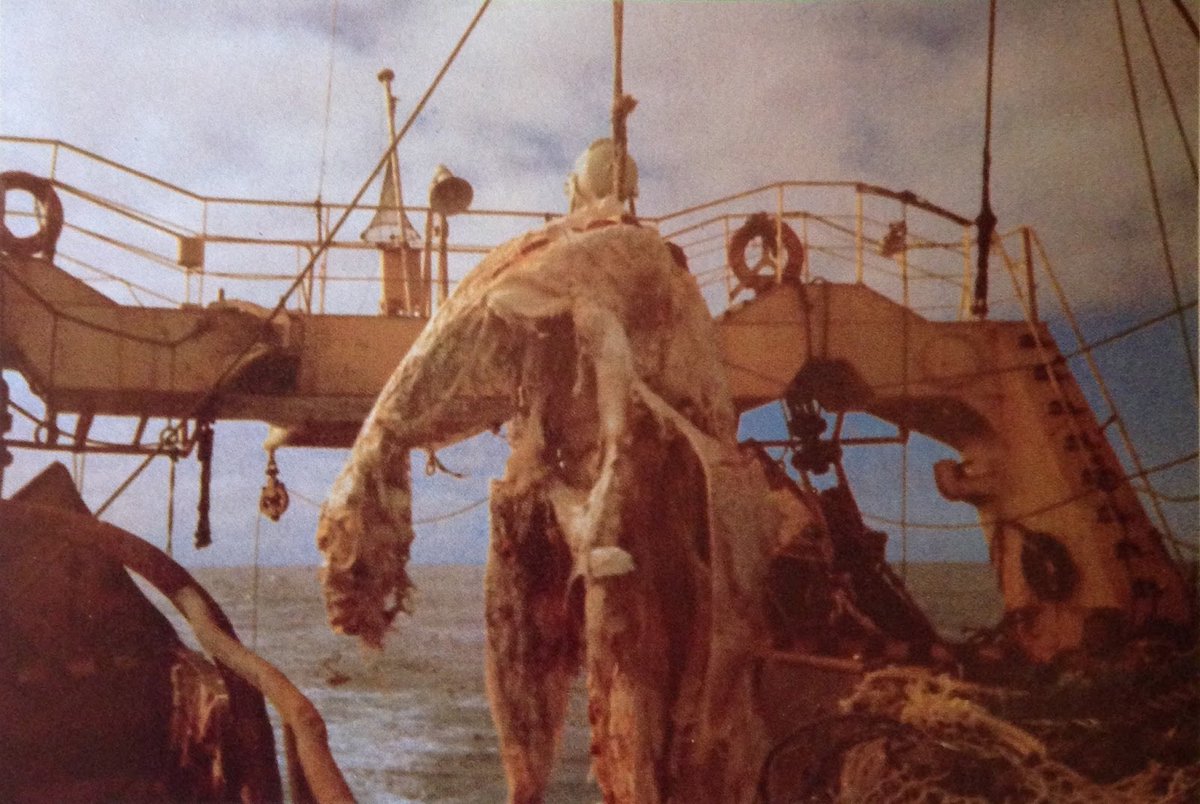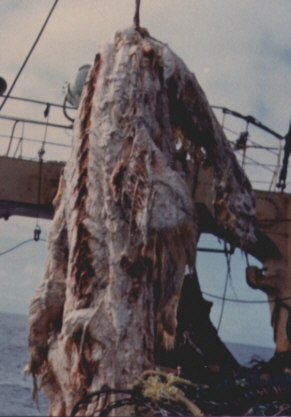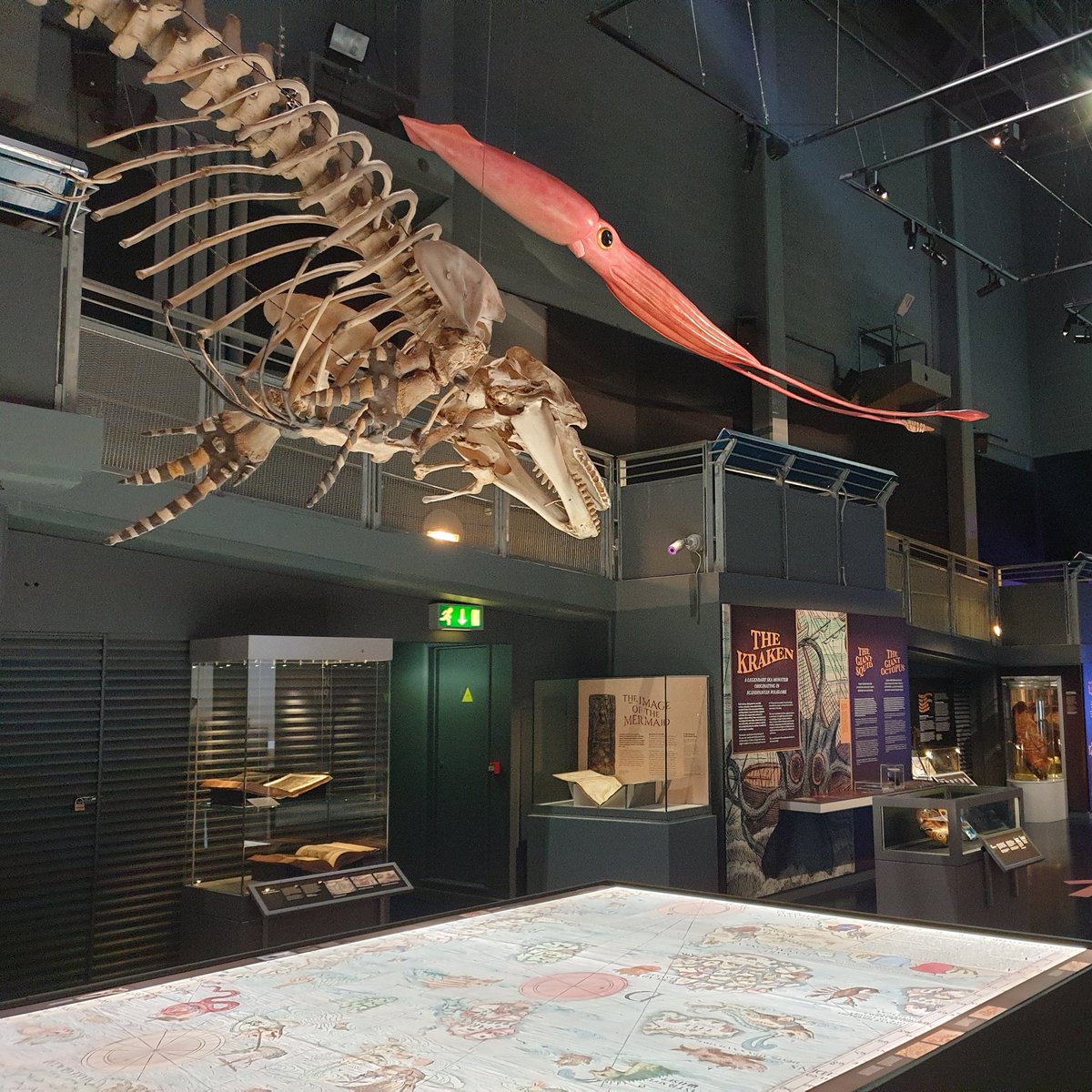
We’re here for another #TetZoocryptomegathread. Once more, we’re looking at images of a supposed dead cryptid, not a live animal. I refer to the MINNESOTA ICEMAN, the claimed carcass of a recently deceased hominid implied to be a ‘prehistoric man’ or #bigfoot-like creature… 



As per usual, this is a VERY LONG AND DETAILED look at the story which involved me looking at, and checking, numerous sources, all of which I’ll discuss as we approach the end… #cryptozoology #bigfoot #monsters 

And because I discuss both sides of the story, its various twists and turns, please remember that it might sometimes seem as if I’m presenting things from just one of those sides. In reality: stick around, the take from the ‘other side’ will get covered too…
I should say upfront, before anyone gets the wrong impression, that the Minnesota iceman was a hoax: a model, made for financial gain via its display as a sideshow exhibit…
Indeed, there isn’t anyone involved in primatological or palaeoanthropological work today who takes the case seriously or indeed pays any attention to it, nor is it generally regarded as an area of ‘active investigation’ within the #cryptozoology community… 

However, the idea that it might be the real deal was out there for a while and can still be encountered among those interested in mystery animals. Furthermore, the story was initially investigated by scientists and the FBI. Read on, we’ll get to this later…
Before continuing, please remember that in the thread that follows I use ‘human’ to refer only to the species Homo sapiens…
The iceman story seemingly began in late 1968 when Frank D. Hansen of Minnesota began exhibiting the supposed corpse of a hominid (about 1.8m or 6ft tall), frozen in a block of ice housed in an insulated, glass-topped ‘coffin’, at carnivals and such across the USA... 



It was initially known as the ‘Siberskoye Creature’ or ‘Siberskoya Creature’ (as John Napier later explained, ‘Siberskoye’ is a manufactured name, meaning roughly ‘man from Siberia’)…
Among the many people who saw the corpse was herpetologist and animal dealer Terry Cullen, who encountered it at the International Livestock Exposition’s annual fair in Chicago…
Cullen phoned author, animal collector and media personality Ivan T. Sanderson – well known for his interest in mystery animals and related phenomena – on December 12th 1968… 

And Sanderson was very interested. Furthermore, he just happened to have visiting with him at the time Dr Bernard Heuvelmans, an acknowledged expert on mystery animals (he very literally wrote the book on the subject, this being 1958’s On the Track of Unknown Animals)…. 



Heuvelmans was – so Sanderson would later write – just about the best person in the world to examine the supposed corpse of an unknown hominid (not everyone would agree with this statement….)...
.... and Sanderson’s writing makes it clear that, while he admitted that he himself might be fooled or tricked, “I defy anybody to fool Bernard Heuvelmans in a case like this”…
Heuvelmans and Sanderson examined the iceman while it was off-show during December 1968, at Hansen’s property. It was kept in a refrigerated truck (shown here). Over the course of three days (16-18th December), Hansen let them take photos, measurements, illustrations and notes… 


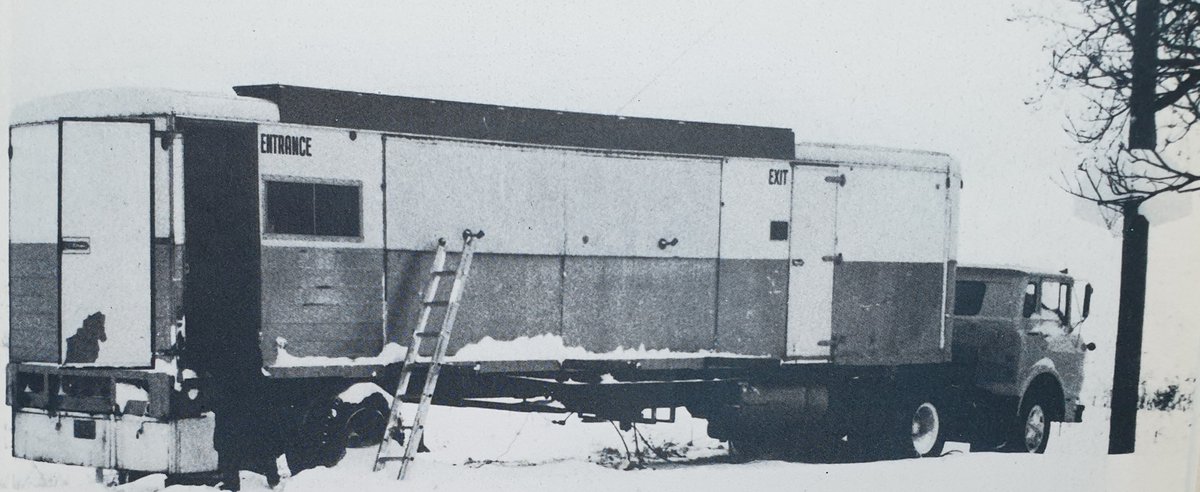


They described how the details were hard to make out due to the opaque nature of the ice (plus they couldn’t look down on it from directly above due to the low ceiling of the truck)...
... and how they derived the best observations by illuminating the corpse at the lowest angle possible. They used strong floodlights for this… 
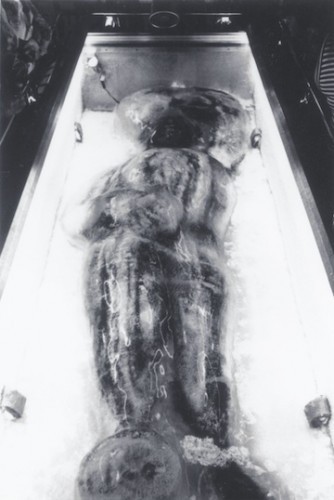
And they were evidently pretty bold in terms of how far they thought they could go, since Sanderson described lying on top of the coffin’s cover glass. At one point, one of the hot floodlights touched the glass and caused it to crack…
Hansen was distressed about this and complained (he reportedly said “Good Lord! How will I be able to explain that?”, this presumably being a reference to the fact that the true owner would be unhappy; read on)…
Either Heuvelmans or Sanderson said to Hansen “We are scientists first, and gentlemen second”, and I leave it to you to decide whether that’s a sucky, arrogant attitude of the sort which gives scientists a bad name…
The breaking of the glass was regarded by Heuvelmans and Sanderson as a sort of win, since it allowed the stench of decomposition to escape from the iceman’s case, a detail which they used as proof of its authenticity (though read on, we’ll come back to this)...
The anatomical observations they made were reported in two venues: Heuvelmans published his in a February 1969 paper in Institut Royal des Sciences Naturelles de Belgique, and Sanderson published his in Genus, also in 1969… 



Heuvelmans’ paper appeared an impressive 3.5 months after he’d observed the body, this meaning that the wheels of publication had occurred at breakneck speed, without peer review and the normal checks which slow the publication of scientific results down to a painful crawl...
Remember that not all scientific papers are created equal. And it’s very odd that these two collaborators published what appear to be competing studies in different venues. Even without knowledge of the background here it might be guessed that the two had, by now, fallen out…
Apparently, they had. Heuvelmans planned to do things ‘properly’ as per scientific procedure: he wanted to submit the results to a format scientific society for academic vetting and publication, whereas Sanderson wanted to talk about the specimen on TV and in the popular press…
Sanderson took to calling the corpse Bozo (a name elsewhere used for a famous TV clown) – he said this was the nickname he and Heuvelmans had agreed on – but this was obviously a tremendously bad idea; it made a mockery of something that was already of highly dubious status…
Anyway… Heuvelmans and Sanderson were so impressed with the iceman’s authenticity that they sought the opinion of a list of august, qualified colleagues...
On being presented with the better part of the evidence, these people (seemingly!) mostly agreed that the animal was a scientific big deal, and was indeed what Heuvelmans and Sanderson said it was…
Harvard anthropologist Carleton Coon said positive things about it, as did (initially…) the Smithsonian’s John Napier (shown here), the famous W. C. Osman-Hill of Yerkes Regional Primate Centre in Atlanta, and George Agogino in New Mexico… 

Incidentally, all of this makes a mockery of the idea that Heuvelmans and Sanderson failed to get professionals interested in the case. No, professionals became very much aware of it, checked it out, but were later to get their proverbial fingers burnt…
In his 1972 book #Bigfoot: the #Yeti and #Sasquatch in Myth and Reality, John Napier explained how Sanderson bought the carcass to his attention as early as February 1969, and how he read Sanderson’s report with sceptical interest… 

Napier took limb measurements from Heuvelmans’ photos and found that the specimen’s ratios were intermediate between those of humans and those of great apes (image from efossils.org), and that the iceman’s hand was proportionally long relative to its arm length… 

Napier implied that these ratios were inconsistent with the iceman being real… which is erroneous, because a ‘new’ hominid could, theoretically, have proportions intermediate between, say, the human and chimpanzee conditions, or be novel due to specialisations of its species…
Napier was also troubled by Sanderson’s description of the iceman’s hairs as agouti (meaning: with dark-light banding), since this isn’t seen in Hominoidea…
Anyway, Napier’s main role in the story concerned his position at the Smithsonian. Sanderson suggested that Napier should take the matter further...
This could be an honest indication that Sanderson really did think the iceman a zoological sensation, or be part of a ploy to maximise the reach and extent of the story…
Whatever, Napier put this to the Institution’s Secretary, S. Dillon Ripley. Ripley wrote to Hansen. Hansen now said that the corpse had been replaced by a model. But then Heuvelmans’ article appeared, which seemingly confirmed that the corpse was real, and had been shot dead…
So Ripley escalated events, and wrote to J. Edgar Hoover (shown here), then the director of the FBI. Hoover “was not very helpful and simply pointed out that as no violation of a federal law had been proved the FBI had no power to act”… 

If the carcass were real, Hansen might have been terrified at this point. But if it were a model made for exhibition… this is priceless promotion of the sort money can’t buy. Display boards associated with the iceman after these events include the words INVESTIGATED BY THE FBI!
Heuvelmans thought that the iceman represented a new species, Homo pongoides (‘ape-like man’), in his 1969 paper. This was inconsistent with his proposal – which we’ll get to – that the iceman was a Neanderthal, in which case it would have to be part of H. neanderthalensis… 



Throughout his writings on alleged mystery beasts, Heuvelmans didn’t shy away from the giving of technical scientific names to mystery beasts, and indeed...
.... he thought it was a ‘damning blow’ that the official rule-keeping organisation on animal names (the International Commission on Zoological Nomenclature or ICZN) required that species need type specimens (‘holotypes’) before they can be considered scientifically valid…
What he seemed to miss or fail to appreciate is that the need for holotype specimens is a necessary act of rigour. Without them, we might end up with all manner of supposed ‘species’ that are based on anecdote and hearsay...
I should act that this specific area of discussion (whether type specimens are needed for a species to be recognised and regarded as valid by the ICZN) has been the course of some considerable debate, and in fact the case of ‘Homo pongoides’ is far from unique. Anyway…
Both the Heuvelmans and Sanderson published reports of 1969 describe how the body was complete and contained within what looked like a single block of ice 1.8m long, 81cm wide and about 1m thick… 



Hansen said he’d had a professional ice-carver whittle the huge block of sea-ice (read on) down to size such that it would fit into the insulated coffin and remain refrigerated. It was kept at -15 deg C...
.... which is apparently not cold enough for long-term storage of a large animal’s body and caused Heuvelmans and Sanderson to worry about the specimen’s longevity…
This was a barrel-chested male with dark hair (it was hairy, like an excessively hairy person, not covered in a pelt). It had prominent brow ridges, a broad, flat, upturned nose (the nostrils pointed forwards instead of downwards), a broad, thin-lipped mouth, and a thick neck… 



Hansen and Heuvelmans both said that the left eyeball dangled from its socket to lie across the cheek, and that this was evidence that the creature had been shot in the back of the head. But Sanderson said that the eye sockets – which were large and round – were empty…
The left arm was raised above the head in a defensive pose, this clearly being a detail meant to relate to the moment of death (on which, read on). A peculiar bend in the forearm was taken to indicate breakage of the bones here… 

The hands and feet were proportionally very large and incredibly broad. The thumb was slender and long, quite different from that of a human thumb...
The nails were flat, yellow and had a tidy, manicured look while a prominent heel-like pad on the outer edge of the palm was suggested by Sanderson to be indicative of part-time quadrupedality (a view which Heuvelmans didn’t share)... 

A slender penis and small scrotum evidenced male status. The knees were bare (a feature common in mythological images of wildmen, but also plausibly present in real, hair-covered hominids, should they be real). Chest hair was arranged on either side of a hairless midline strip… 



Again it has to be noted that these anatomical details rely on heavy interpretation on the part of Heuvelmans and Sanderson, since the iceman could only be viewed, distorted, through thick, partly opaque ice; Sanderson himself stated many times that the features were ambiguous...
Hansen stated several times that he was simply the ward of the iceman, and that it actually belonged to a wealthy Californian who’d obtained the carcass via pursuit of his own niche interests and had then wanted to see the public’s reaction to it, hence the loan to Hansen...
This isn’t Stewart’s only connection with stories about crypto-hominids: it’s recorded that he had a serious interest in #yeti and #bigfoot, funded expeditions, and was involved in the procurement of specimens (most famously the Pangboche ‘yeti’ hand… a story for another time)… 

If this connection is true, what was the nature of Stewart’s interest in the subject? Was it a genuine pet passion or… did he have biased motives? Some say that Stewart was a creationist and, like so many creationists, wanted to destroy or erode the evidence for evolution...
Apparently, Stewart was a fundamentalist Christian who underwent a renewal of religious belief in the late 1980s (he died in 1997), so I guess this is plausible...
Several researchers – including Peter Byrne (the last survivor of the Four Horsemen of Sasquatchery; shown here), Loren Coleman, Peter Rubec and William Jevning – have pursued the Stewart angle and basically come to a dead end… 

Byrne did say that Stewart had “an association of some kind with a large and mysterious animal” (wow… how weird does _that_ sound), and even wondered if Stewart’s family destroyed or disposed of any link after Stewart’s death. This is, of course, highly speculative…
Indeed, I think it’s likely that the Stewart connection is bogus, unfounded, and perpetuated by Hansen and the cryptozoological community at large because it makes the iceman story more interesting (and believable?), more mysterious, more complex. That’s why I’m covering it…
Hansen also claimed that the carcass had been discovered floating in a block of ice in the sea off the coast of Siberia. It was then recovered by a Russian sealing or Japanese whaling vessel, then confiscated by the Chinese government, then…
… placed in storage in Hong Kong before going on sale in a Chinese emporium before it was purchased by an agent of the mysterious ‘true owner’, who then lent or rented it to Hansen… 

In fact, Hansen’s discussions of the iceman and its backstory are long, detailed and voluminous enough to fill a book. In a July 1970 article published in Saga Magazine, he changed his story again... 

... now it was now from American soil and had been shot by Hansen during a 1960 deer-hunting trip near the Whiteface Reservoir, Minnesota…
Hansen shot a deer, tracked its blood trail, and was shocked to find three hairy creatures, “tearing at the insides of the freshly killed deer”, and scooping its blood up with their cupped hands…
The male of the group leapt in Hansen’s direction, arm raised, making a horrible sound – and he shot it dead. This ‘arm raised’ detail is surely mentioned to link the account to the pose of the iceman. Hansen departed in fright, swearing never to return…
… until he did, about a month later, and relocated the corpse, took it home, informed his wife, hid the body in a freezer in the basement, decided to keep it in a deep-freeze state, and then took the freezer and corpse with him when he moved house in the summer of 1961…
Hansen retired from the Air Force in 1965, and by December 1966 he’d made the decision to become a travelling showman: partly because he was bored, apparently, but also because....
... he owned a valuable antique John Deere tractor (well, it came from 1920 or thereabouts) which people at agricultural shows and such would happily pay to see…
Hansen planned to exhibit the iceman as well as the tractor, but he also explained (in his 1970 article) how he decided to have a model of the iceman made as a backup in case the ‘real deal’ was suddenly deemed legally problematic. Hmm, ok…
He apparently sought help from Howard Ball (who made one of the life-sized mammoths on show at the La Brea tar pits) and Hollywood special effects guru John Chambers (of Planet of the Apes fame), who put him on to Pete and Betty Corral, who implanted the model’s hairs… 

John Napier also said in his account of the story that he charged George Berklacy of the Public Relations Office of the Smithsonian to dig into the background of the case, and Berklacy also connected Pete Corrall with the case (Hansen spelt it ‘Corral’; I think it's Corrall)..
Needless to say, these investigations led the Smithsonian to publicly declare no official interest in the iceman; it was a hoax, as must have been suspected all along given the very fact that it was a sideshow exhibit, a ‘gaff’, which the curious could see for 35 cents… 

Oh, oops... 25 cents maybe. In more recent years, a man named Howard Ball has been credited as the maker of the iceman; this was disclosed in a 2008 podcast interview featuring Verne Langdon…
Langdon worked for the famous Don Post Studios (best known for building masks used in Hollywood movies) and had even worked on Planet of the Apes....
According to Langdon, Hansen had approached Don Post Studios in 1966 with the idea of having a manufactured exhibit – known in the travelling entertainment industry as a gaff – made for touring…
This story was outed in a 2008 episode of the podcast The #Bigfoot Show (now, just about impossible to find online); I heard part of the story directly from the late Paul Vella, who spoke about the iceman at the Weird Weekend conference in 2009… 

So – who made the iceman, Corrall or Ball, and why are there these two stories? This all sounds very similar to competing accounts behind the manufacture of the Patterson-Gimlin suit. I do think the Ball story has a reasonable ‘paper-trail’ though (albeit… without paper)… 

Incidentally, recall the mention of the ‘smell of decomposition’ released when the glass broke? Some people say that the latex or rubber that the specimen was made of might explain this, since this can have an unpleasant smell once it starts to break down…
But other people say that a quantity of decomposing animal tissue was deliberately built into the model to create this effect, the tissue perhaps being from a dog carcass…
The iceman went on show during May 1967 (so, some time before Cullen saw it in late 1968) and proved a hit; Hansen claimed that this original exhibit was the model, not the real carcass, and that not until March 1968 did he put the real thing (as in, the carcass) on show…
In addition to the public, his exhibit was apparently visited by a string of students, professors, and even physicians and pathologists who thought it impressive..
Hansen also explained how – from his point of view – the publicity generated by Heuvelmans and Sanderson was bad news. After seeking advice from his attorney, he – supposedly – decided to hide the real body away and put the model on show once more…
To tie this back to Heuvelmans and Sanderson…. they, according to Hansen, saw the real thing, but those who visited afterwards did not. Read on to see how this played out… 



Sanderson is usually celebrated in cryptozoological writings as a hero of this story, as an experienced and careful observer of facts who soberly reported and verified the iceman’s authenticity…
But I don’t think that this accurately reflects what happens, nor does it reflect Sanderson’s approach to cases like this at all…
We have to remember – and I mean no disrespect whatever in saying this – that Sanderson was not a working scientist or academic but, at this point in his life, a popular writer, journalist, media personality and broadcaster… 



Stories like this were his bread and butter: he made a living by promoting them, talking about them, and selling stories on them, and he benefitted by hyping them up and making them out to be a bigger deal than they perhaps were…
Sanderson’s promotion of stories like the one surrounding the iceman, and that of Roger Patterson’s #bigfoot film a year or two earlier, can’t be seen as honest, scientific efforts to ‘get to the bottom’ of what actually happened, nor do they ever have this implication or tone…
Instead they’re mystery-mongering efforts to make the story as interesting and entertaining as possible, and to maintain its longevity in the public eye, and as a talking point and area of active investigation within the relevant communities, as much as possible…
For all Sanderson’s involvement though, much of the iceman’s story is Bernard Heuvelmans’. Heuvelmans – as readers of previous #TetZoocryptomegathreads will know – is the so-called ‘father of #cryptozoology.... 

... and responsible for penning the most influential, widely-shared opinions on mystery creatures and what they might be, should they exist… #cryptozoology 

As a #cryptozoology specialist, he become involved in an extraordinary number of monster-themed adventures and investigations. And, as we’ve seen, he became convinced of the iceman’s reality...
He stated (mostly in his 1974 book L’Homme de Néanderthal est Toujour Vivant – ‘Neanderthal Man is Still Alive’ – co-authored with Russian historian and economist Boris Porchnev; shown here) that this was evidenced by numerous anatomical details… 





These not only included things like the look of the nails, teeth, and skin texture (he referred to freckles, skin blemishes and so on), but also details like the presence of food particles on the teeth and even parasites visible on the hair…
There’s the implication from Heuvelmans’ writings that he had photos of these details but, if he did, they were never released or published (to my knowledge)…
Indeed, it’s sometimes said or implied that Heuvelmans produced a substantial descriptive monograph on the carcass, though – if such a thing existed or exists – he failed to get it published...
I was really hoping that the translated version of Toujours Vivant would include at least a summarised version of this anatomical work, but it doesn’t. I wonder if there’s a copy in the Heuvelmans archive at the Museum of Zoology at Lausanne, Switzerland… does anyone know? ...
Unless you’re a serious collector or researcher of the right age, chances are high that you’ve never seen a 1974 edition of Toujours Vivant (I never have; I got involved in the subject too late, and have always been too poor, to have access to the classic works of the field)…
So it was pretty amazing when, in 2015, news arrived via cryptozoologist and author Loren Coleman that Paul LeBlond (best known in mystery animal research for his writings on sea and lake monsters) had completed a translation of the work _and_ that it was going to be published…
That book, published in 2016, is Neanderthal: the Strange Saga of the Minnesota Iceman. It allows the whole of the story (as seen from Heuvelmans’ perspective, of course) to be evaluated by an anglophone audience, and in inexpensive, widely available form... 

I reviewed the book back in 2017; I’ll share links to that review later in the thread…
It’s very clear throughout the book that Heuvelmans thought his interpretation of the carcass had been unfairly and inappropriately dismissed by the scientific community...
It’s also obvious that he fell out with Sanderson while working on this project, in part because Heuvelmans thought that Sanderson’s statements on the iceman were unwise or reflected poor judgement…
Sanderson, incidentally, didn’t agree with Heuvelmans’ contention that the iceman was a Neanderthal: he thought instead that it was a different sort of hominid descended from Homo erectus…
Yes, cryptozoologists interested in ‘wildman’-type reports have claimed the continued existence of a reasonably long list of hominids otherwise known only as fossils, including dryopithecines, Gigantopithecus, australopithecines, hobbits, archaics and Neanderthals…
Heuvelmans’ book also includes a very long, complex take on how the iceman came to be in the USA. It may or may not surprise you that it’s totally different from what Hansen put forward (see earlier in the thread)...
Heuvelmans argued that there was a ‘cloak and dagger’ (to use his own words) story behind the obtaining of the corpse and that Hansen had smuggled it out of Vietnam as part of a clever scheme to use it for profit..
He discussed the politics and subterfuge of heroin smuggling, cited the 1972 book The Politics of Heroin in Southeast Asia, and... 

... argued that Hansen’s way of getting the body out of Vietnam (which involved stowing it in a body bag and pretending that it was a deceased soldier) effectively established a heroin-smuggled technique used repeatedly on later events…
As interesting as this is, it appears to me like totally baseless speculation and I’m not sure it should be taken seriously...
Prior to the appearance of this 2016 English translation of Heuvelmans’ writings on the iceman, I hadn’t appreciated how much ‘non-standard’ stuff was included in Toujours Vivant…
Central to Heuvelmans’ claims about the iceman was the idea that Neanderthals had survived to the present and, furthermore, that Neanderthals were quite different from the ‘cave people’ of popular lore, literature and art _and_...
... further furthermore, that they had become even more quite different relative to what was revealed by the fossil record…
To Heuvelmans, Neanderthals were ‘hyper-boreal’, shaggy-furred creatures specialised for nocturnal life in remote, mountainous places...
... He argued that Neanderthal feet were specialised for gripping rocks, that they had a unique, up-turned, truncated nose and deeply set eyes, and that they were bestial overall, and not at all human-like… 


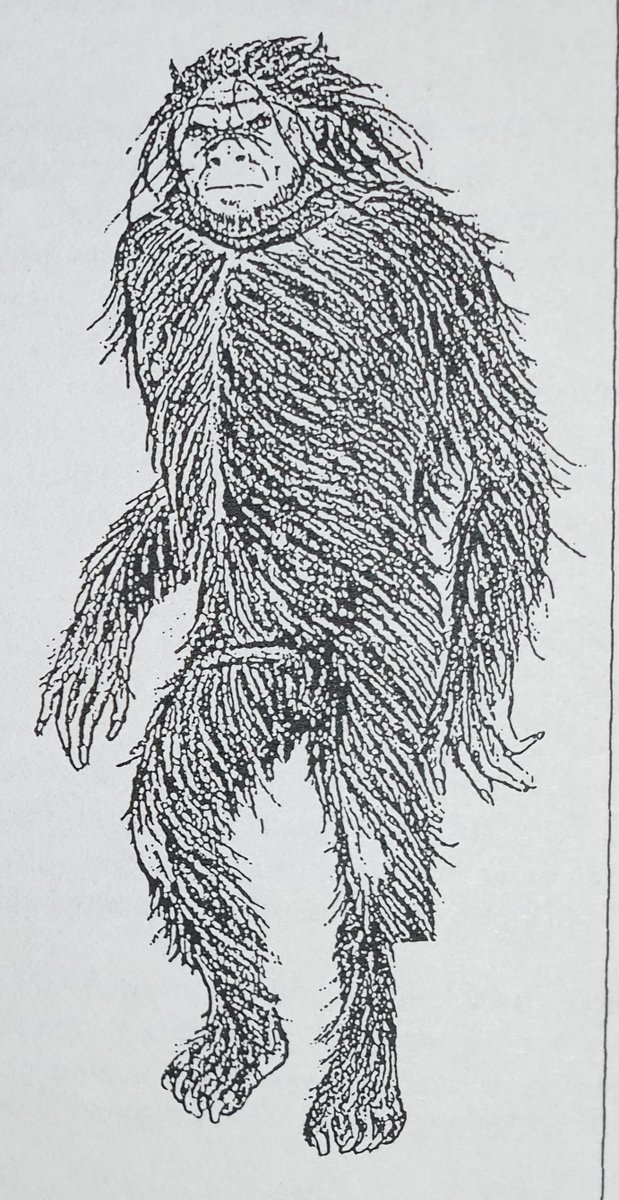
This view of Neanderthals is thoroughly and convincingly countered by a substantial quantity of evidence from the anatomy of their fossils, their DNA, and from tools, artifacts and evidence for constructions and dwellings associated with this species…
This view of Neanderthals as dark, bestial creatures has persisted in parts of the cryptozoological and fringe literature: white supremacists love it, and so do some #bigfoot proponents (it’s been mentioned numerous times on the bigfoot-themed podcast Sasquatch Chronicles)…
It was recently promoted quite vigorously by Danny Vendramini for his 2009 book ‘Them + Us: How Neanderthal Predation Created Modern Humans’… 

Heuvelmans argued that Neanderthals were regarded by ancient humans as ‘beasts’ which they hunted or even saw as potential beasts of burden, and he pointed to pieces of rock art which portrayed ‘Neanderthals’ this way. There’s no reason to link any of this stuff to Neanderthals… 


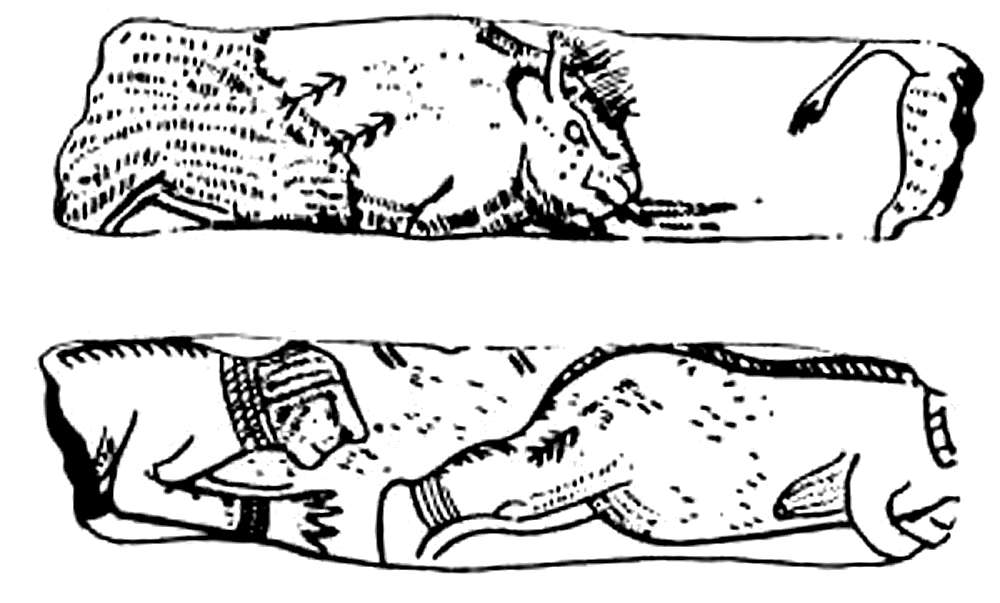
As if this isn’t odd enough, the Heuvelmans take on post-Pleistocene Neanderthals is that they'd undergone, and were undergoing, an evolutionary process known as de-hominisation whereby they had evolved _from_ human-like forms into more ‘bestial’, solitary, secretive creatures…
A very detailed, life-sized artistic reconstruction of Homo pongoides as imagined by Heuvelmans was produced by artist (and wife of Heuvelmans) Alika Lindbergh (aka Monique Watteau)...
... and is today one of the most commonly seen versions of the creature. It shows it as very dark – almost black – but pale-skinned, and equipped with pointed ears… 

It’s also very tall. We’ve seen already that Heuvelmans and Sanderson thought the iceman to be about 1.8m tall, but its knees are bent, so it should have been even taller when ‘alive’…
Lindbergh’s excellent artwork also appears on the cover of the republished edition of Toujours Vivant, this time showing H. pongoides engaging in close physical contact with Dr Heuvelmans, and she produced other paintings too… 



The weirdness of ‘modern Neanderthals’ as per Heuvelmans was not something reflected in the fossil record, but was a new thing; a Holocene event...
He argued in Toujours Vivant (and its translation) that the iceman was skeletally quite different in proportions even from the youngest known Neanderthal fossils, and that this was due to Holocene evolution…
If ‘bestial’ forms like Homo pongoides evolved from more human-like ones, how far might things continue? It turns out that Heuvelmans was a fan of an odd and discredited phylogenetic hypothesis called Initial Bipedalism, championed by Heuvelmans’ PhD supervisor Serge Frechkop… 



Initial Bipedalism posits that the most primitive vertebrates were humanoid bipeds, that the human body shape is primitive within the evolutionary history of mammals, and that non-humanoid vertebrates (including even fish) have evolved from animals shaped like us...
Fantastic stuff! If you want to know more, I wrote a #TetZoo article on Initial Bipedalism here… web.archive.org/web/2012110916… …
It was quite a surprise to find that Heuvelmans covered this stuff in his Minnesota iceman writings, and he admitted to almost being embarrassed about it...
.... writing “In this work, which challenges such a solid anthropological belief as the extinction of the Neanderthals, I would have preferred not to also bring in a rather heretical theory of human origins”…
Everyone knows that #cryptozoology champions the supposed existence of creatures not generally thought to exist...
Less well known is that justifying the supposed existence of these creatures has required writers to come up with an impressive list of ‘non-standard’ evolutionary hypothesis, some of which are downright bizarre…
Let’s get back to images of the iceman itself. You only have to look at a few photos of the iceman to note that the more recent ones look different...
The most obvious difference is that teeth aren’t readily visible in the Heuvelmans and Sanderson images, but are totally visible in the more recent ones. The toes are also different, being more spread out in more recent photos… 



The explanation repeatedly given for this discrepancy is, as we’ve seen earlier, due to the ‘fact’ that Hansen had a replacement model made should he ever get in trouble for owning the original body...
... and when things looked risky, he disposed of (or secreted away) the carcass and _replaced_ it with an accurate replica…
Ergo, anyone who saw the iceman _after_ this act of replacement (which is supposed to have happened in April 1969) was therefore looking at the replacement model, _not_ the original carcass…
But to those who think that the carcass always _was_ a model, the explanation is that there never was a real body, and that the story of the model being a ‘replacement’ was bogus. It always was a model, throughout the story...
Mostly overlooked or even deliberately ignored by some are Heuvelmans’ statements on this, since he was aware of the ‘replacement model’ idea and wanted to comment on it. Heuvelmans, as we’ve seen, thought that the body was 100% real… 



It’s important to note, then, that he stated without equivocation that “it was still the actual corpse…. it was the same and only specimen”...
To those writers and researchers who think that Bernard Heuvelmans was a brilliant scientist and hyper-acute observer, I’m here to tell you that...
.... you can’t accept his initial take on the carcass being real but then ignore or reject his later claim that there was no replacement model: you either have to accept both of his assertions, or reject them both…
For the record, I don’t think Heuvelmans was a brilliant scientist or hyper-acute observer. I’m afraid to say that I think quite the opposite, but that’s a broader issue for another time…
There are a few years – extending from the 1990s to around 2010 – during which the trail of the iceman went cold (no pun intended), whereabouts unknown. In fact, it was in storage and private ownership, and it surfaced in June 2013 when it appeared on the TV show Shipping Wars… 

Photos circulated immediately within the cryptozoological community (in particular at Loren Coleman’s Cryptozoonews site). There wasn’t much ice involved, but what was very obviously a full-sized poseable model, depicting all the key features of the iceman, was offered for sale… 





And it was purchased, by Steve Busti of the Museum of the Weird in Austin, Texas. Busti put it on show: you can see it today. It looks to be the same as the object that everyone had seen beforehand: the object which Heuvelmans regarded with certainty as the original ‘corpse’…
In other words, the _original_ – as stated by Bernard Heuvelmans – is on display in Austin. The original model. I haven’t seen it myself, I’m said to say, but my sometime partner-in-crime @thejohnconway has, and he bought me this t-shirt… 

This story has so many twists and turns and is embroiled in such strange ideas on the evolution and biology of non-existent animals – Homo pongoides ‘lives on’ in the cryptozoology literature – that what I’ve written here is still only a summary…
For the full, inside story, I do recommend the reading of Heuvelmans’ 2016 book Neanderthal, which I really did enjoy reading (even if I found his credulous acceptance of the object as a real corpse as quite remarkable)… 
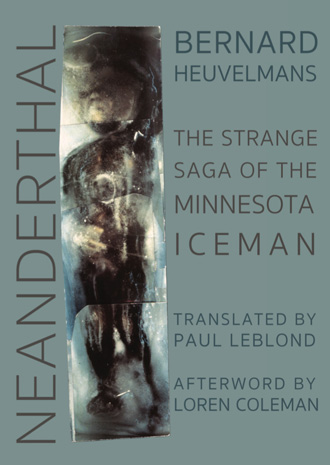
I also looked at Napier’s 1972 Bigfoot, William Jevning’s 2016 The Minnesota Iceman, and Brian Regal’s excellent 2011 Searching for Sasquatch in compiling this thread… 





I reviewed the iceman case in my own book of 2017, Hunting Monsters (now proving hard to get). The iceman section of that book, however, was previously featured here at #TetZoo: blogs.scientificamerican.com/tetrapod-zoolo… … 

Oh, wrong link, sorry, use this one, as it hasn't been messed with by the hosters ... web.archive.org/web/2017010312… #cryptozoology #TetZoo
I reviewed Heuvelmans’ 2016 book in two parts, firstly here… web.archive.org/web/2017061500… and then here ... web.archive.org/web/2017050218…
That’s where we’ll end, thanks for reading! Here’s a reminder that my eventual plan is to collate these #TetZoocryptomegathread things into a book, or perhaps cover them in a TV series. THE END.
Minor updates: 'said to say' upthread was meant to be 'sad to say'. And I forgot to note that Peter Byrne's mention of a "large, mysterious creature" associated with Jimmy Stewart was likely a joke reference to Harvey the rabbit :) 

• • •
Missing some Tweet in this thread? You can try to
force a refresh


